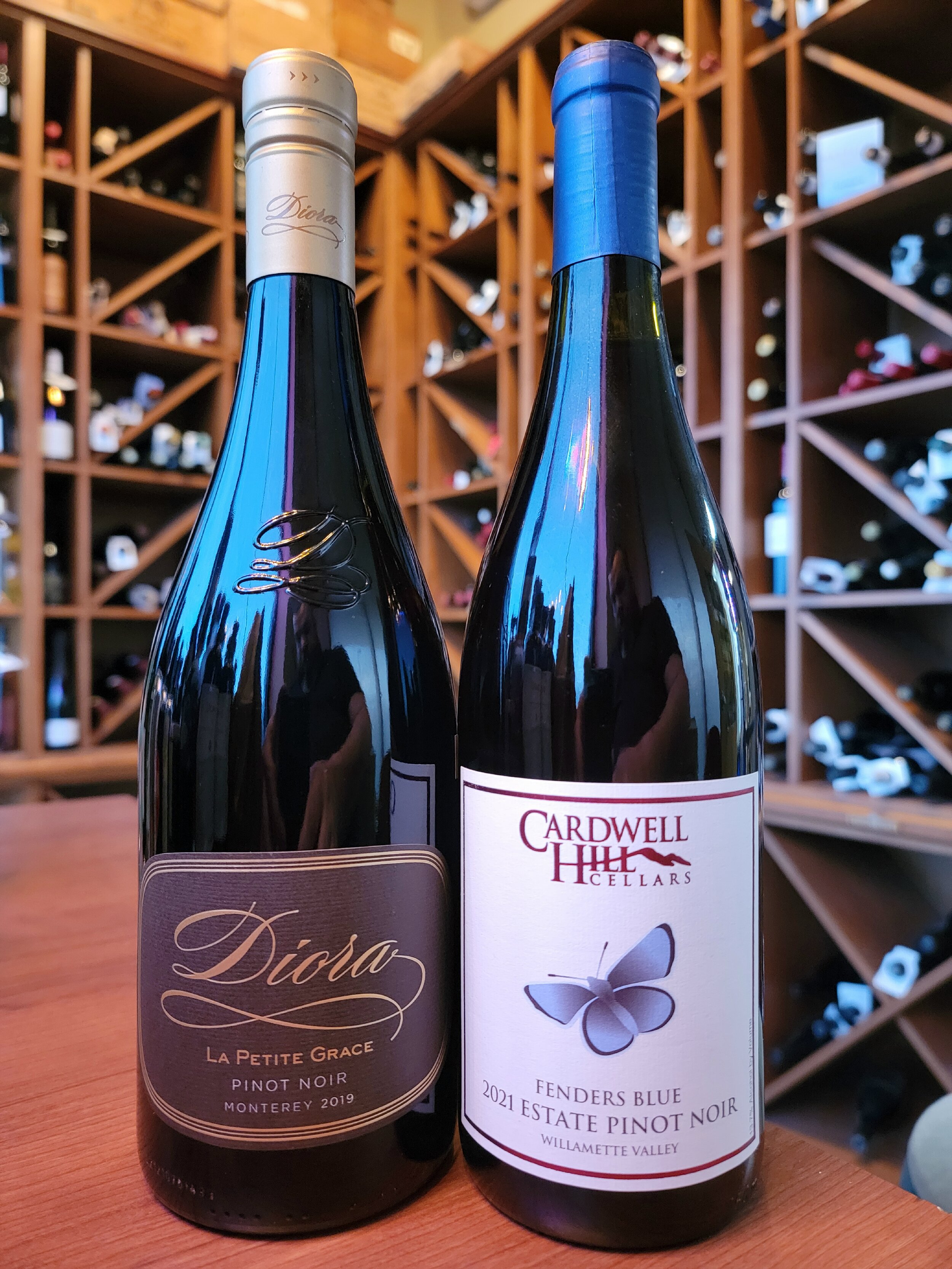The Heartbreak Grape aka “Sideways”
/Jancis Robinson says, “Pinot Noir is a minx of a vine. Inarguably feminine, if not female. This is a completely exasperating variety for grower, wine makers and wine drinker alike. It leads us to a terrible dance, tantalizing with an occasional glimpse of the riches in store for those who persevere, yet obstinately refusing to be tamed.” In other words: difficult to grow, difficult to turn into wine and let’s face it, difficult to find a good bottle of it in a wine store.
Pinot Noir literally means “little black.” The berries are tiny, maybe 1/3rd or 1/4th the size of any local green grocery-store grape you might see. This means a smaller ratio of liquid to skin and a larger proportion of skin mass to pulp. This is important to wine makers as the skin is where all the (black) color comes from and where all the crispy tannin lives. The pulp inside of the berry is over 90% water and sugar. Concentration – the balance of which is a two-
sided sword for the winemaker.
Cardwell Hill PN Estate 2021 “Fenders Blue” Willamette Oregon
The Fenders Blue butterfly is a protected species found in specific areas of Benton County, Oregon, about an hour south of Portland. Cardwell Hill Cellars has one of these dedicated sites. It’s a family-owned, hippie-ish winery (it’s Oregon, after all) producing over 8,000 cases per year. Sustainable agriculture practices are used to achieve very nice fruit that’s hand harvested - no machines! Their practices are certified sustainable by LIVE (Low Impact Viticulture and Enology).
Diora “la Petite Grace” PN 2019 Monterey County Cali
Unfolds with big layers of chocolate-covered cherries and just a hint of crunchy sage spice. These grapes were cropped from a single vineyard site called San Bernarbe with several unique Pinot vineyards: warmer sites inside giving bigger, more fat fruit and several cooler sites giving more acid to perfectly balance the blend.
Finding the tradeoff for value Pinot vs. true bougie Pinot is the real challenge for the consumer (and Jane, owner & wine buyer). What is the balancing point? Sure you can spend considerably more money to perhaps get better-tasting wine, but at what trade off ($$)? Everyone has a different answer to that question certainly but we tend to think value first. The more sustainably grown and produced, the better. Be assured, D.Schulers will NOT sleep until we find the perfect bottle of Pinot Noir =)
Cheers,
Eric

